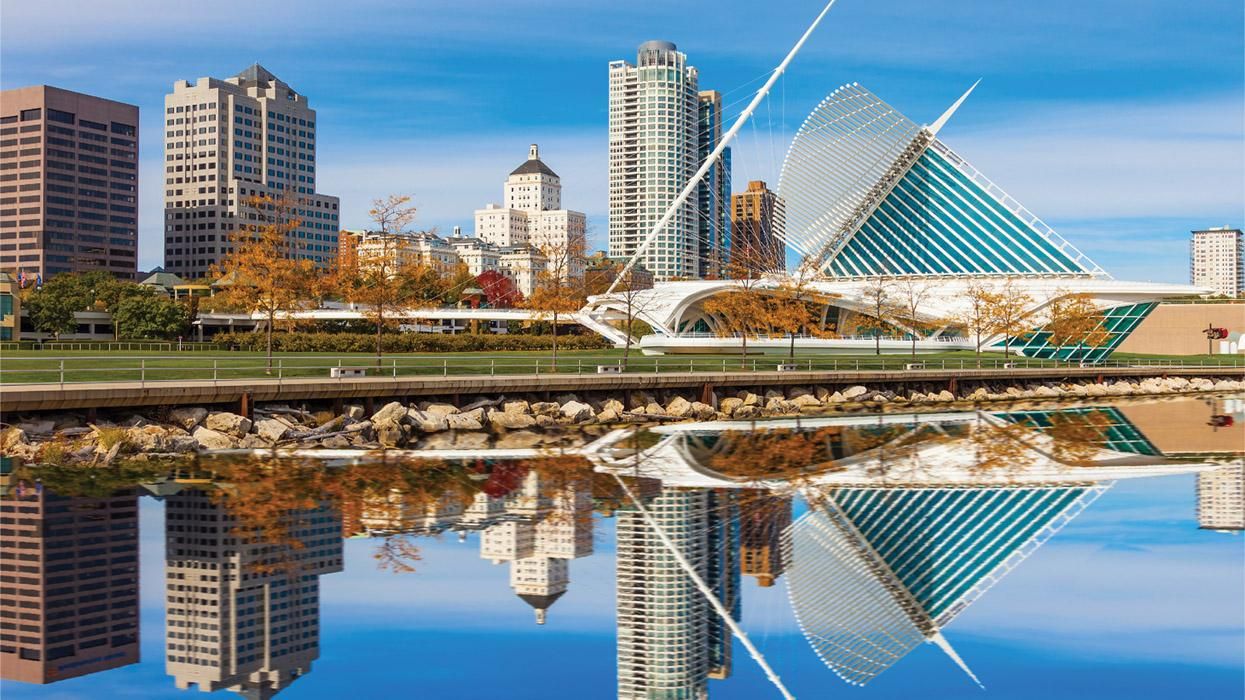
Ron and Patty Thomas/Getty Images.
This dynamic Great Lakes city has a more colorful past than you might imagine.
January 25 2023 5:00 AM EST
By continuing to use our site, you agree to our Privacy Policy and Terms of Use.

I’ve been to Milwaukee on numerous business trips and always enjoyed my brief visits to this picturesque city on the shores of Lake Michigan. But beyond its much-touted German heritage, I never truly saw it as a particularly diverse place. Then a deeper dive changed my mind and I’ve fallen head-over-heels for the Brew City.
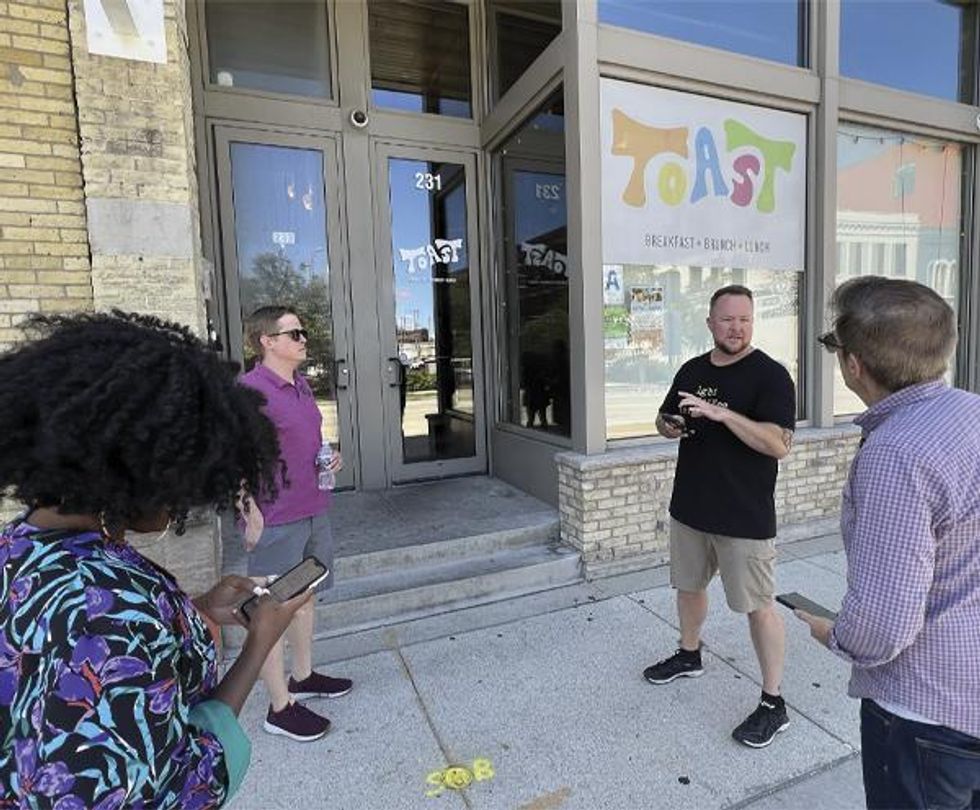
Brice D. Smith, of LGBT MilWALKee, at former site of C’est La Vie bar. Paul J. Heney
Milwaukee, Wisconsin's queer history is being rediscovered thanks to the efforts of Dr. Brice D. Smith, project director of a forward-thinking new app, LGBT MilWALKee. Smith, a Colorado native who grew up in New Mexico, moved to Milwaukee for college and has never left. The city, the trans man says, has always been a “big tent kind of place.”
LGBT MilWALKee’s very cool app debuted on June 1, 2022, just in time for the city’s Pride celebrations. The free app currently contains three guided walking tours: Birth of the Movement, Gayborhoods That Are Gone, and Walker’s Point Then. The LGBT MilWALKee group is currently developing additional tours and hopes to have them uploaded in time for this year’s Pride.
You can also use the app to explore on your own: the history and significance of two dozen landmarks are described in two- to three-minute professionally developed videos (using local paid talent from the Milwaukee LGBTQ+ community). I found the app an addictive way to learn about the city’s queer history.
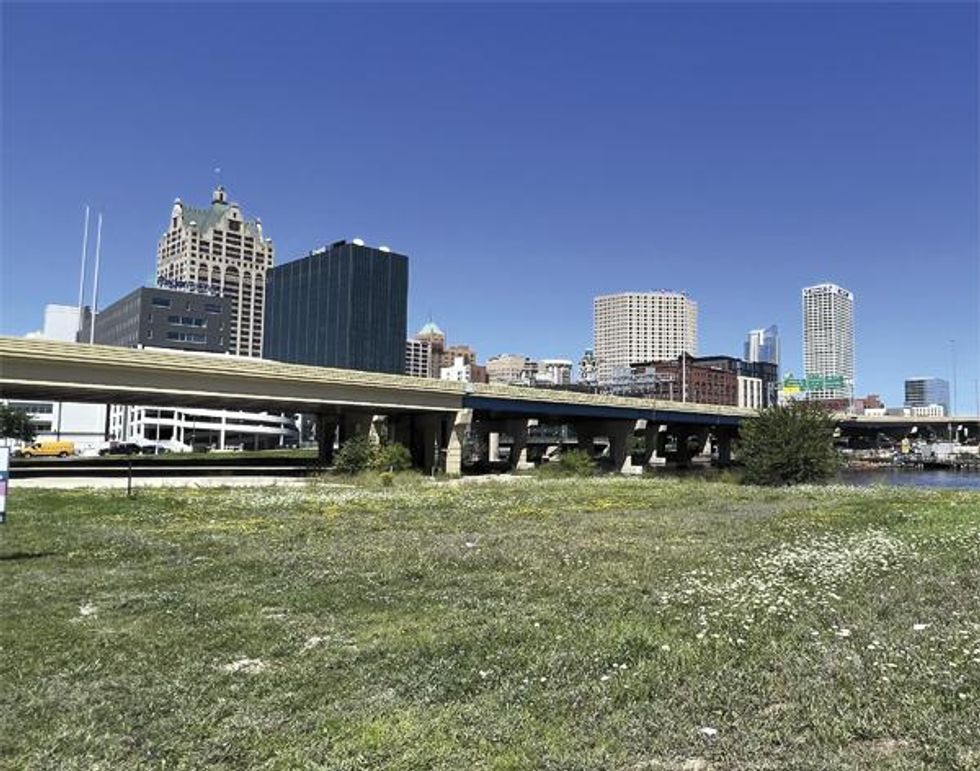
The empty lot where The Black Nite once stood Paul J Heney
The LGBTQ+ community here has some truly interesting history. While the Stonewall Riots remain the most referenced fuel for the queer rights movement, sparks were already lighting across the country. In Milwaukee things were kicked off at “The Black Nite Brawl.” The Black Nite was a local gay bar that opened in 1958 (under the name Old Mill Inn for its first year). On August 5, 1961, a group of straight men attacked the bar, and the queer patrons fought back.
Josie Carter, a self-described “Black queen,” and her partner, the bar’s bouncer, were heavily involved and Carter recounted the stories to many locals over the succeeding years. Today, the spot where The Black Nite once stood is an empty lot next to the freeway that cut through downtown — cleaving both LGBTQ+ history and minority neighborhoods. Now the site is being designated as an official Milwaukee County landmark.
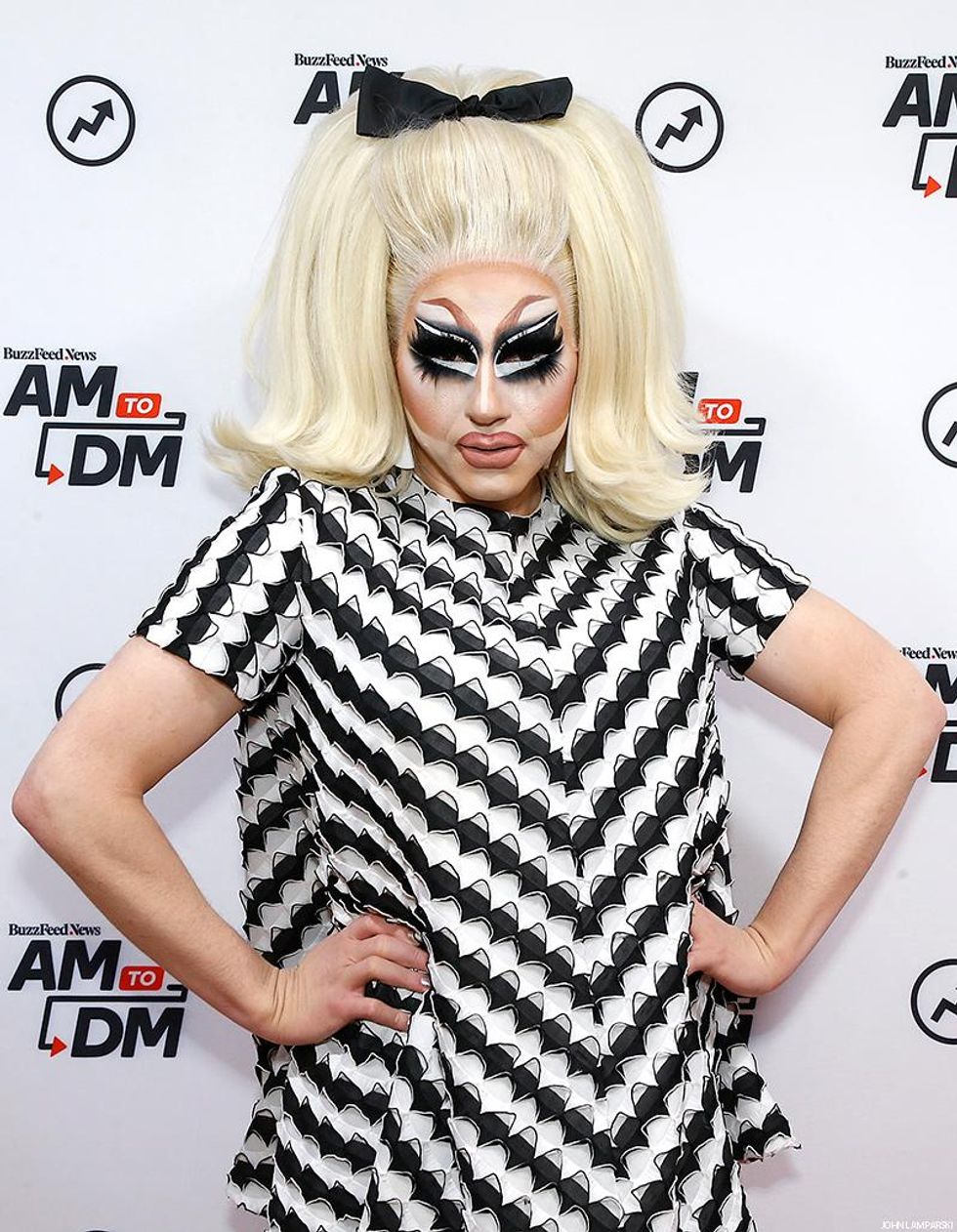
I also visited the city’s (and state’s!) oldest gay bar, This Is It!, which is referred to locally as “TITS.” The club is an old-fashioned dive bar on one half, with a nice stage area and a second bar on the other half, which features the glittering scepter that Trixie Mattel (above) won on RuPaul’s Drag Race All-Stars in 2018. Mattel, who hails from Milwaukee, is now a co-owner.
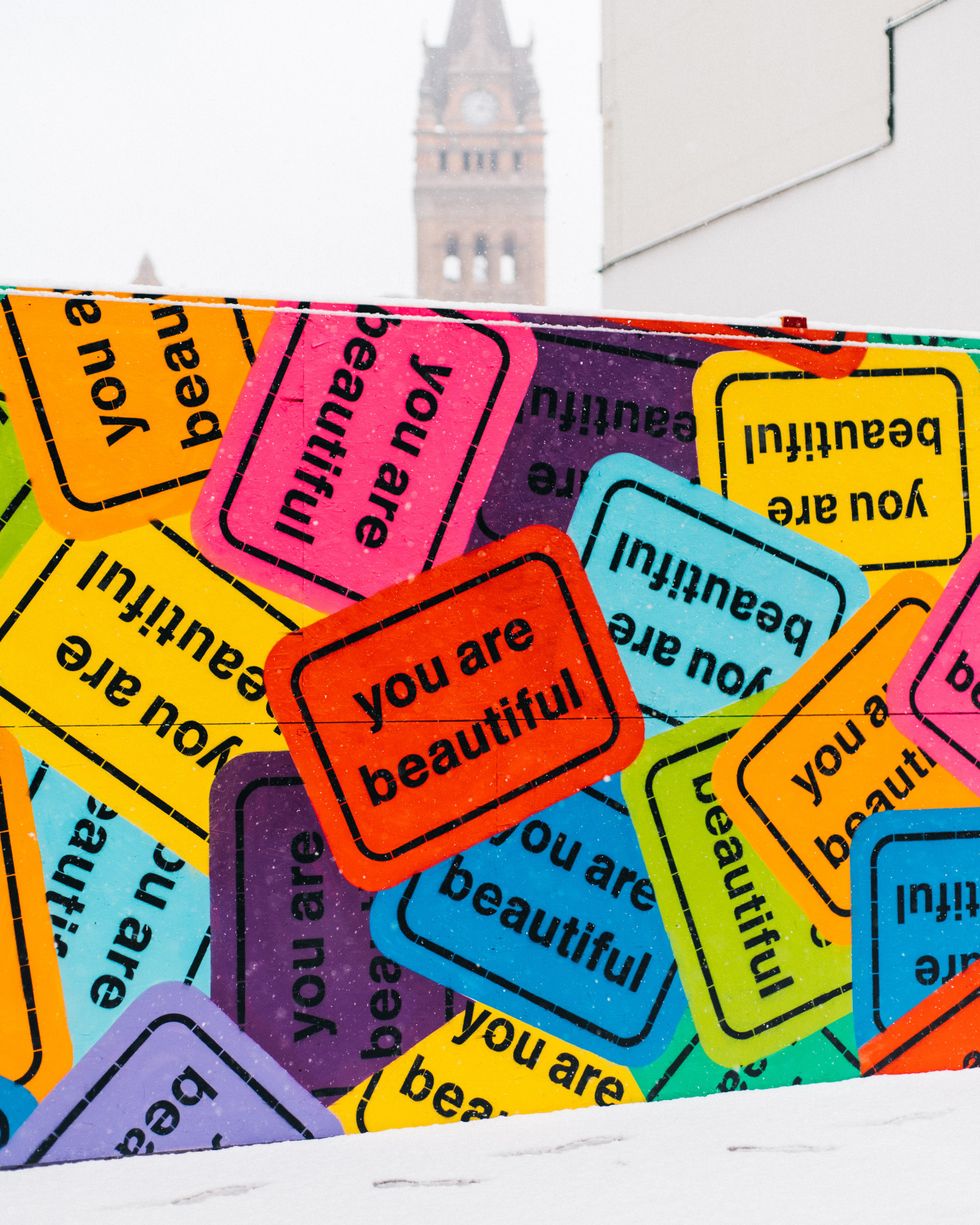
Milwaukee’s “You Are Beautiful” mural by artist Matthew Hoffman Photo by Tom Barrett on Unsplash
Beyond the dynamic and accepting queer scene here, Milwaukee has a lot more to focus on. Here are six ways to connect and mix with different cultures in this lovely Midwestern gem:
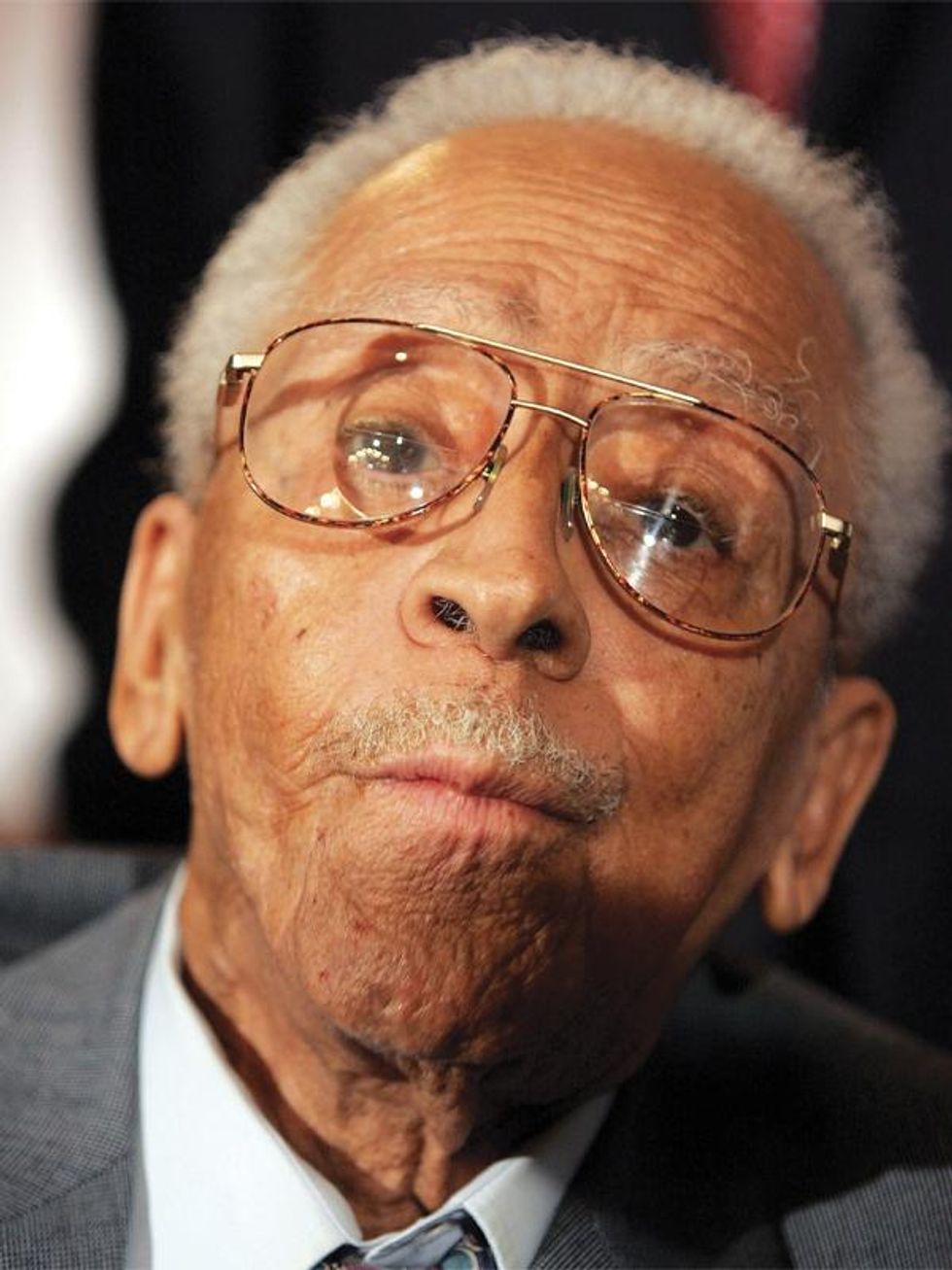
Dr. James Cameron by Joe Raedle/Getty Images
This thoughtful, introspective, and profoundly moving, America’s Black Holocaust Museum was founded in 1988 by Dr. James Cameron and inspired by a trip to Israel. Similarities in the historical atrocities perpetuated against the two peoples spurred Cameron to open a museum dedicated to the Black struggle in America. Cameron also has an incredible personal story, having survived a lynching as a 16-year-old boy in North Carolina when he was hanged with two other boys. Only he lived. After being closed for a decade, the museum reopened in 2022 in Milwaukee’s historically Black neighborhood of Bronzeville.
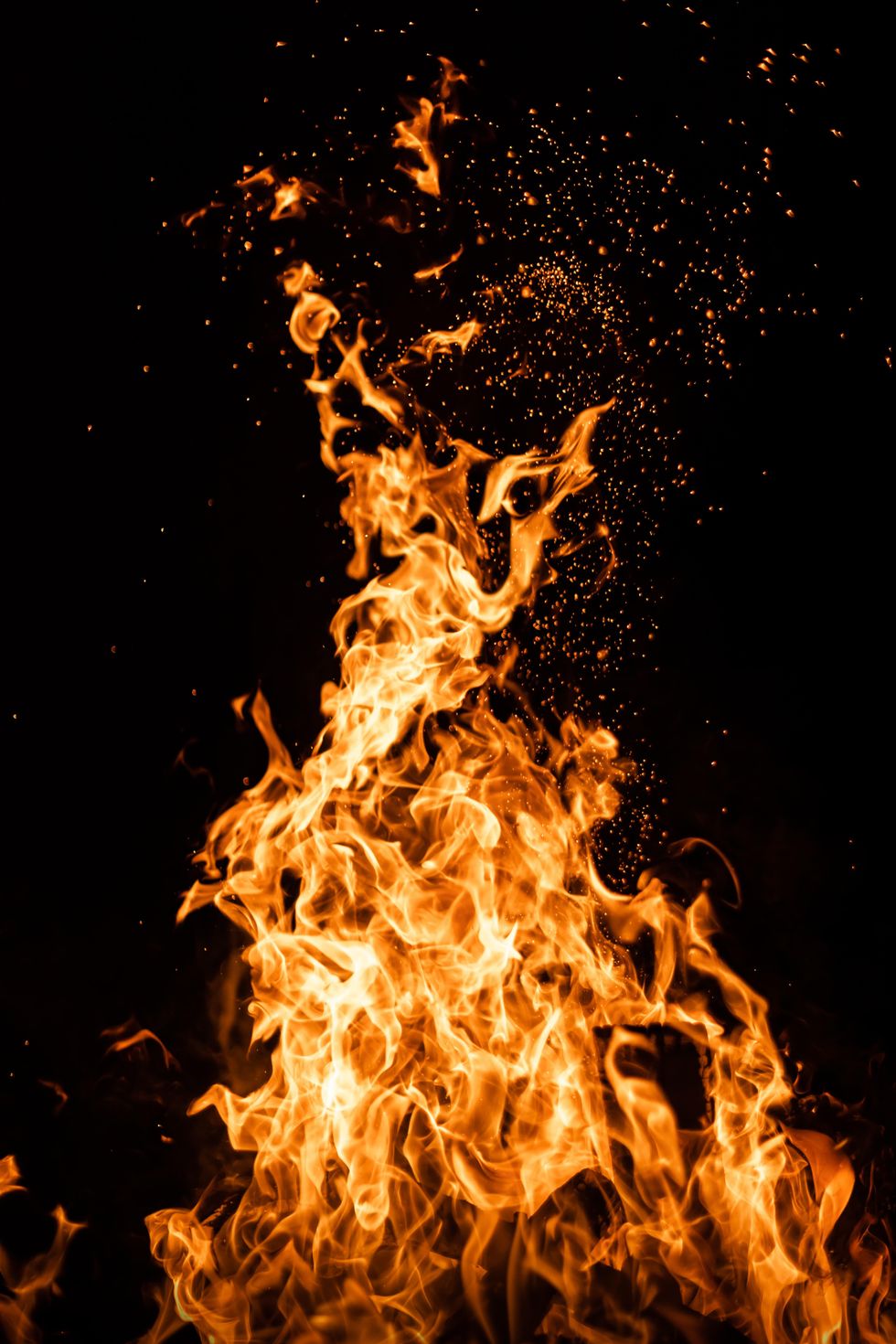
Potawatomi are People of the Place of Fire Photo by Tobias Rademacher on Unsplash
Near downtown Milwaukee, the Potawatomi Hotel & Casino rises 19 stories, providing gorgeous views of the city and lake. The facility includes a 500-seat theater and a range of dining options including RuYi, a very memorable pan-Asian restaurant. The casino and hotel help support the Forest County Potawatomi Community (whose name means “People of the place of the fire”), but also contribute to the greater Milwaukee community.
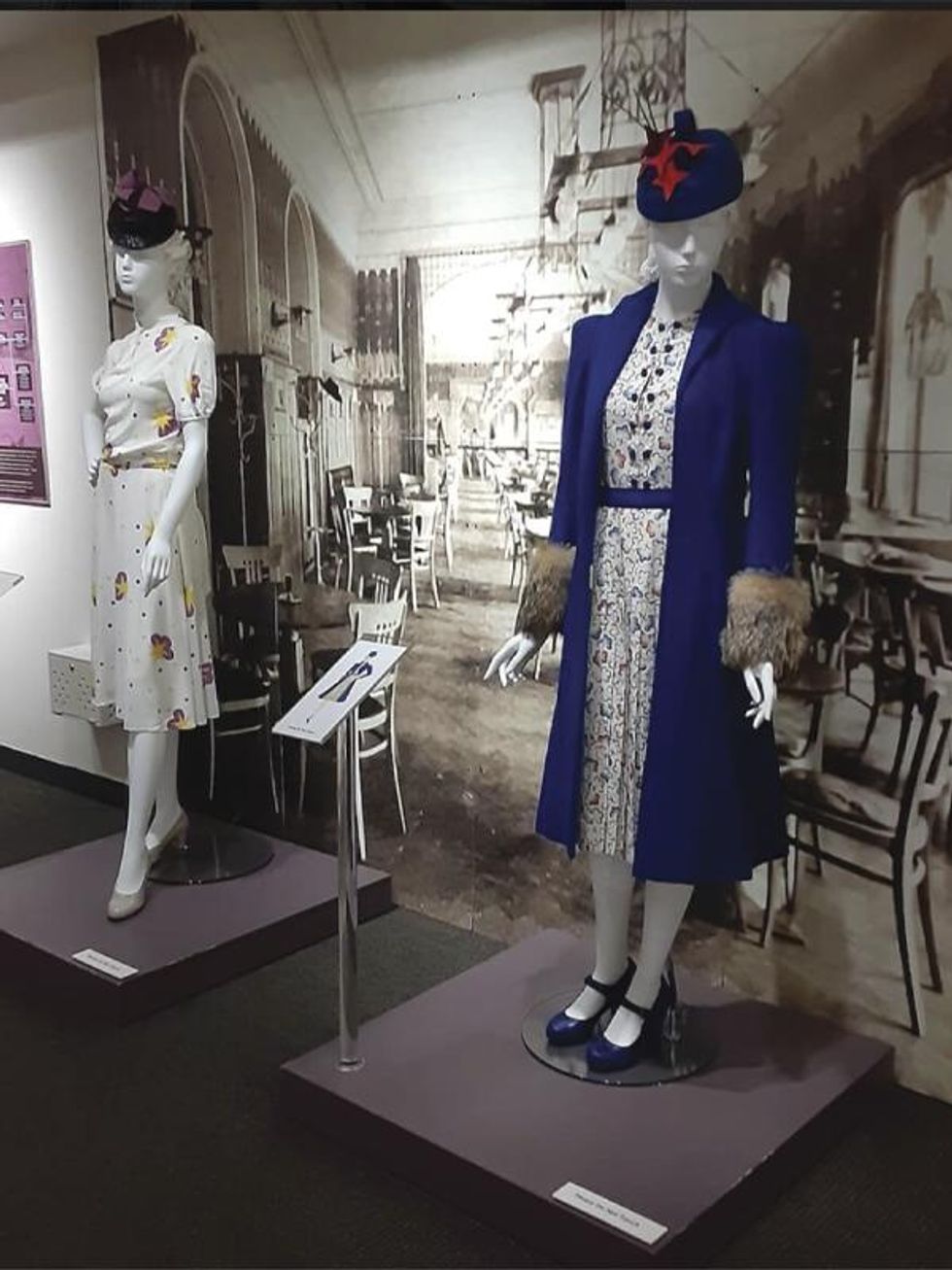
The Jewish Museum Milwaukee spent 3,000+ hours to create Hedwig Strnad’s dresses Courtesy NCSML curator Stefanie Cohn
The Jewish Museum Milwaukee offers thoughtful exhibits on Jewish beliefs and community, the history of intolerance, the Holocaust, and specific connections between the local community and Isreal. I was surprised to learn that Golda Meir, its first female prime minister, spent part of her childhood in Milwaukee. A particularly moving exhibit, “Stitching History from the Holocaust,” displays dresses designed by Hedwig “Hedy” Strnad who was murdered in the Holocaust. Her sketched designs have been tailor made; allowing Hedy’s talent to live on — and serving as a devastating reminder of the human potential lost to hate.
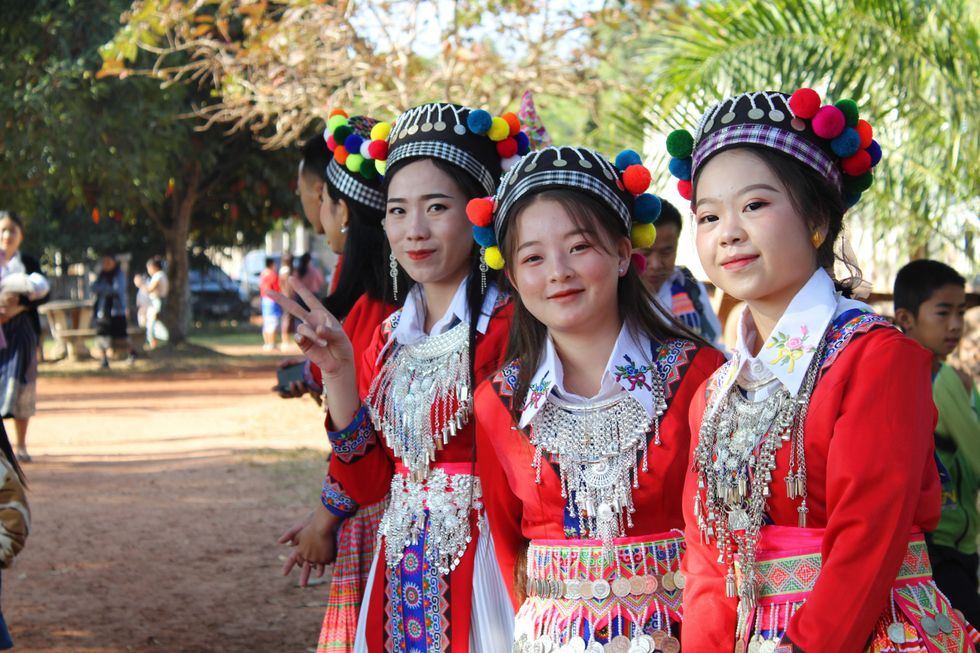
Hmong women in traditional dress Photo by Molydar SOUAMA on Unsplash
At the Hmong American Friendship Association Museum visitors learn about this community that hails mostly from Laos, Thailand, and Vietnam. The center provides services for the local Hmong community (one of the largest in the U.S.) as well as sharing their culture with visitors.
Incorporated in 1983 by three cousins, the association serves the many Hmong here, who come mostly from Laos, Thailand, and Vietnam. Thousands of years ago, this culture emigrated to the mountainous regions of those three countries from near the Yellow River in southern China. There’s not a lot of written history, and the Hmong people (or sometimes called “free people”) don’t have one area of the world that they call home. Today, the largest communities of Hmong people in the U.S. live in Minnesota, Milwaukee, and Los Angeles.
The center provides translations and transportation services for the community, as well as mental health resources — and female advocacy programs for domestic violence and emotional support. There’s a food pantry twice a week and a youth program including Hmong dancing classes, tutoring, college campus tours, and leadership workshops.
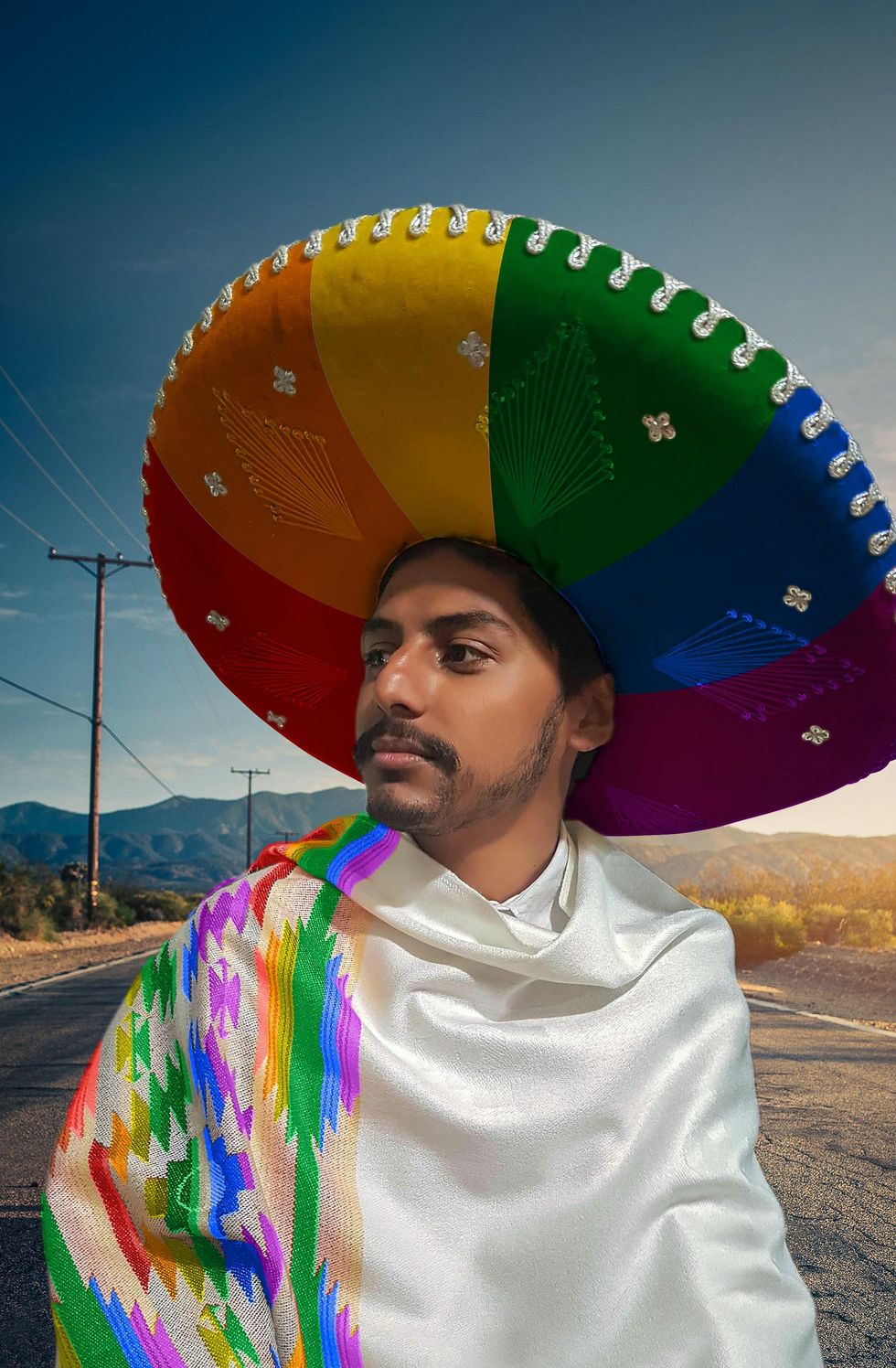
Latinx man in sombrero Photo by Hugo Herrera on Unsplash
Latino Arts, Inc., engages with the local Latinx community and builds bridges to others in the area and counters negative stereotypes. Brilliantly, they do this outreach through the arts — from music and performance to gallery displays that feature the work of everyone from schoolchildren to older adults in the adjoining United Community Center’s adult daycare facility.
The organization has been around for more than three decades and includes a 3,000 square-foot modern art gallery and a 350-seat multi-purpose auditorium. In the past, this group has welcomed internationally renowned Hispanic artists to the city, including José Feliciano, Celia Cruz, and Tito Puente.
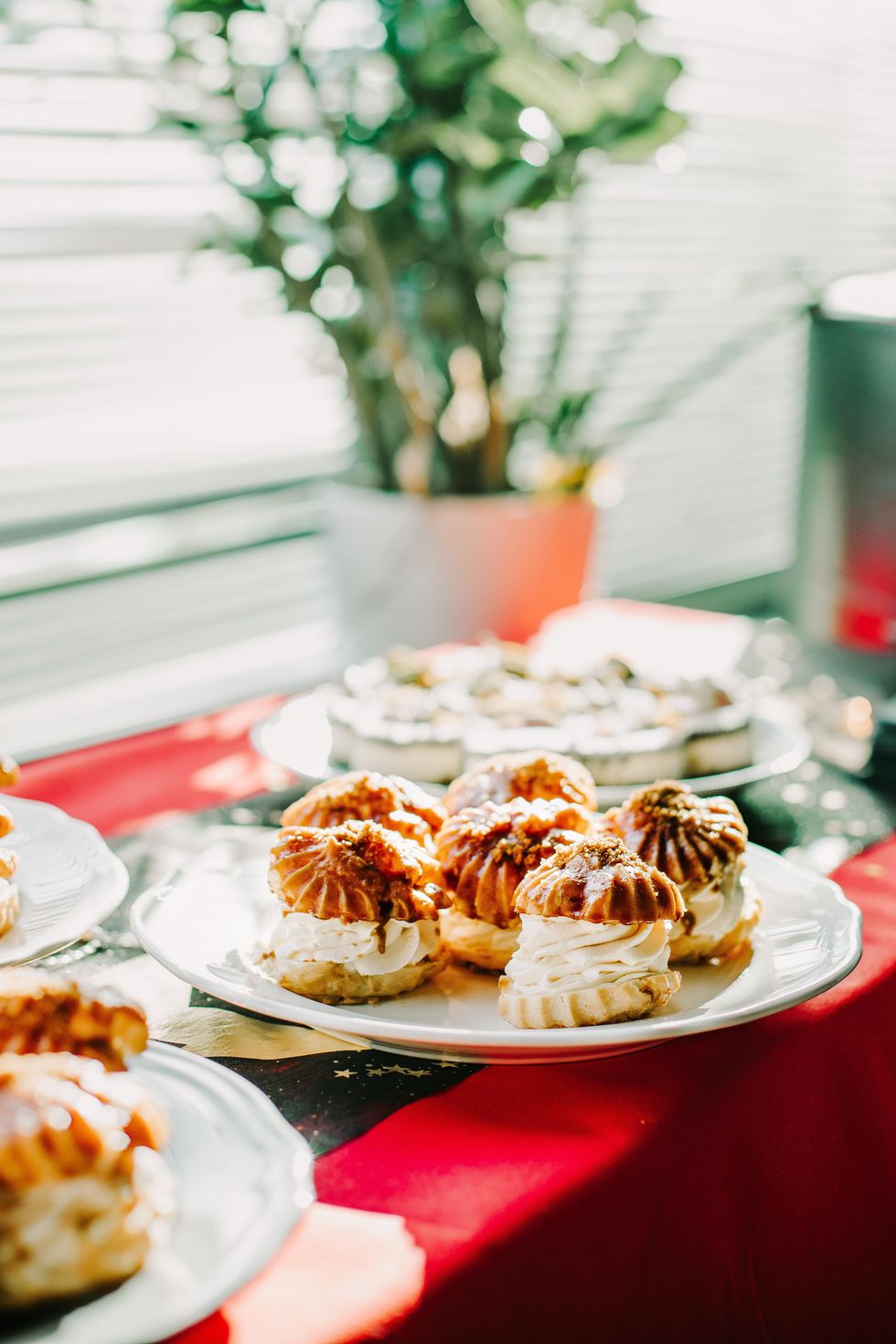
400,000 cream puffs are eaten every year at the fair Photo by Aneta Voborilova on Unsplash
Although Milwaukee is an urban center, the state’s impressive State Fair is held each year in the city of West Allis, Wisconsin — a suburb that’s a quick 15-minute drive from downtown. Held over 11 days each August, the Fair is one of the 10 largest in the United States, attracting just over a million visitors each year. It also attracts heavily from the Chicago area, thanks to its closer proximity. In fact, it’s two times closer to Chicago than the Illinois State Fair is, which is held in distant Springfield, Illinois.
There’s so much to see and do here, starting with the animals. Chicks, rabbits, goats, cows — they have it all, in enormous buildings spread across the fairgrounds. Watch the chicks hatch in front of your eyes or take in the rabbit jumping contests. You can even watch the regularly scheduled pig races, which must be experienced to be believed. Then there’s the food. Fried everything is available here, most of it is available on a stick, and it’s all delicious. I tried fried cheese, fried brandy old fashioned s’mores on a stick, and some sort of fried jalapeno sausage that was much kinder on my stomach than I feared. Plus, the cream puffs. There’s a whole building dedicated to them. These scrumptious (and light!) treats are a true tradition here — to the point that they sell 400,000 of them each year over the 11 days of the Fair!